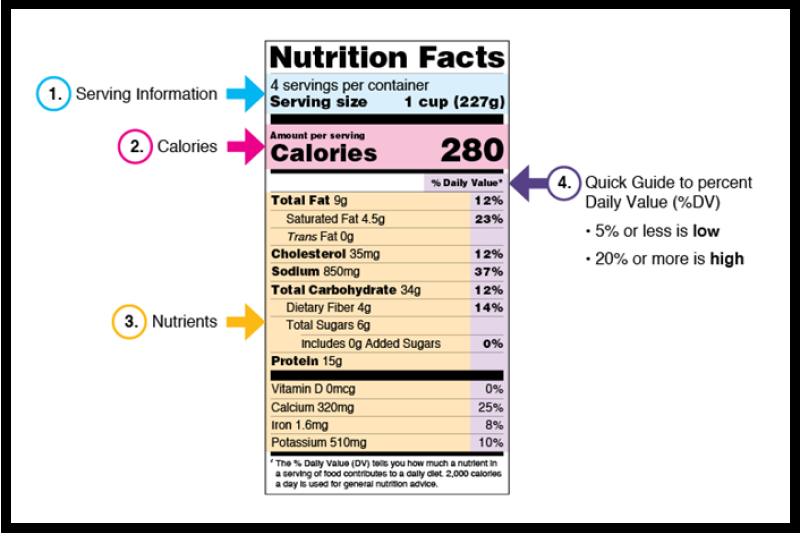Winning Habits | Strength Crushers | Smart Cooking | SCORE Team | Healthy Connections | Fueling Greatness
Nutrition Food Labels 101
January 2022
Tram Le
BS in Dietetics Student, Idaho State
A new year signifies a fresh start for many of us. But, when it comes to health and wellness resolutions, don't make them too restrictive or unsustainable. This can prevent you from following through with these goals. For example, learning to choose quality fuel can be tricky, especially for athletes since they often need more calories than others. Moreover, school and training leave little time to plan, shop, and prepare meals.
Make Learning How to Read the Food Label On of Your Resolutions
Start off the year with an achievable resolution! Learning how to read the Nutrition Label Facts and ingredients list on foods can help ensure quality nutrition intake. The easy guide below helps you cut through the gobbly gook and understand what you are actually eating.

When reading a food label, there are four key components to focus on:
- Serving Information
- Calories
- Nutrient
- Percent Daily Value
The Serving information is the amount that you typically eat at one time, not a recommendation for how much you should eat. Use this as a comparison to your portion size.
The Calories are the amount per serving size. A little math is necessary to know what you are getting in one or more servings and the number of calories consumed.
For Percent Daily Value (%DV), you can apply the 5/20 rule when looking at the percentages of the nutrients—5% or less is low, and 20% or more is high:
- Nutrients that you want to keep at 5% or lower are saturated fat, trans fat, cholesterol,
- Nutrients that you want to get more from are dietary fiber and listed vitamins and minerals.
For Nutrients, there are three macronutrients listed on the label: fat, carbohydrates, and protein.
- The goal is to choose foods lower in saturated and trans fats.
- The nutrition food label does not distinguish the types of carbohydrates in total sugars and added sugar in food. Check the ingredients list to learn what types of sugar are added, such as sugar and high fructose corn syrup.
- Although carbohydrates are the foundation of energy sources for athletes, consuming added sugar in moderation is recommended. Consume more carbohydrates from grains (whole wheat grains are best), fruits, and milk products.
- Protein is only reported in grams because it depends on an individual protein needs.
Lastly, you check out the Ingredients List. Don't freak out about the ingredients you can't pronounce or recognize. Instead, focus on what ingredients are listed first. Ingredients appear in descending order by weight. This means that the food contains the largest amount of the ingredient that is listed first on the label. And, the least amount of the ingredient that is listed last.


